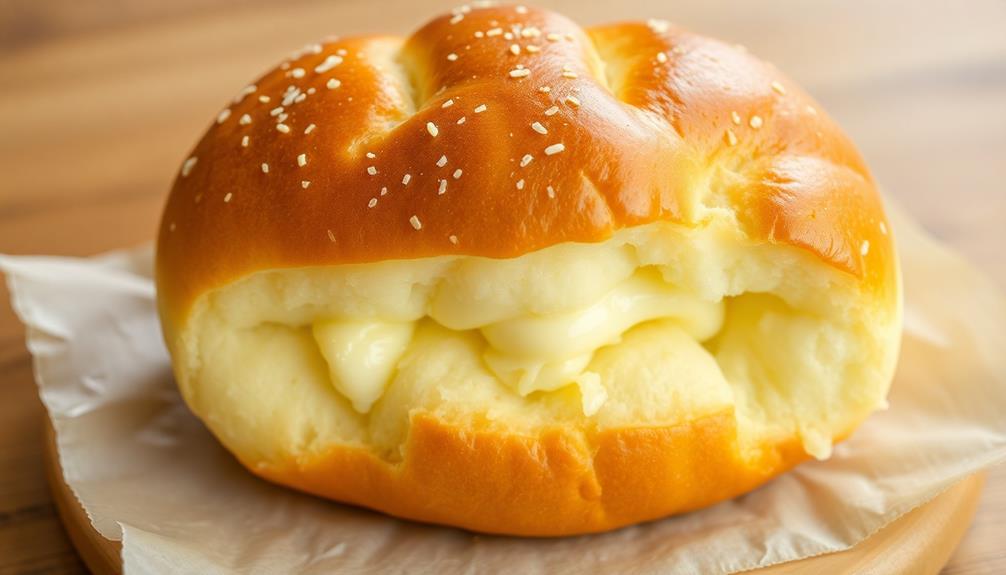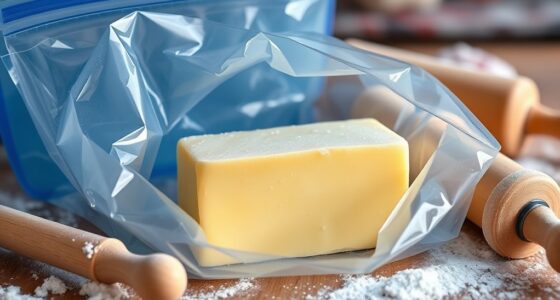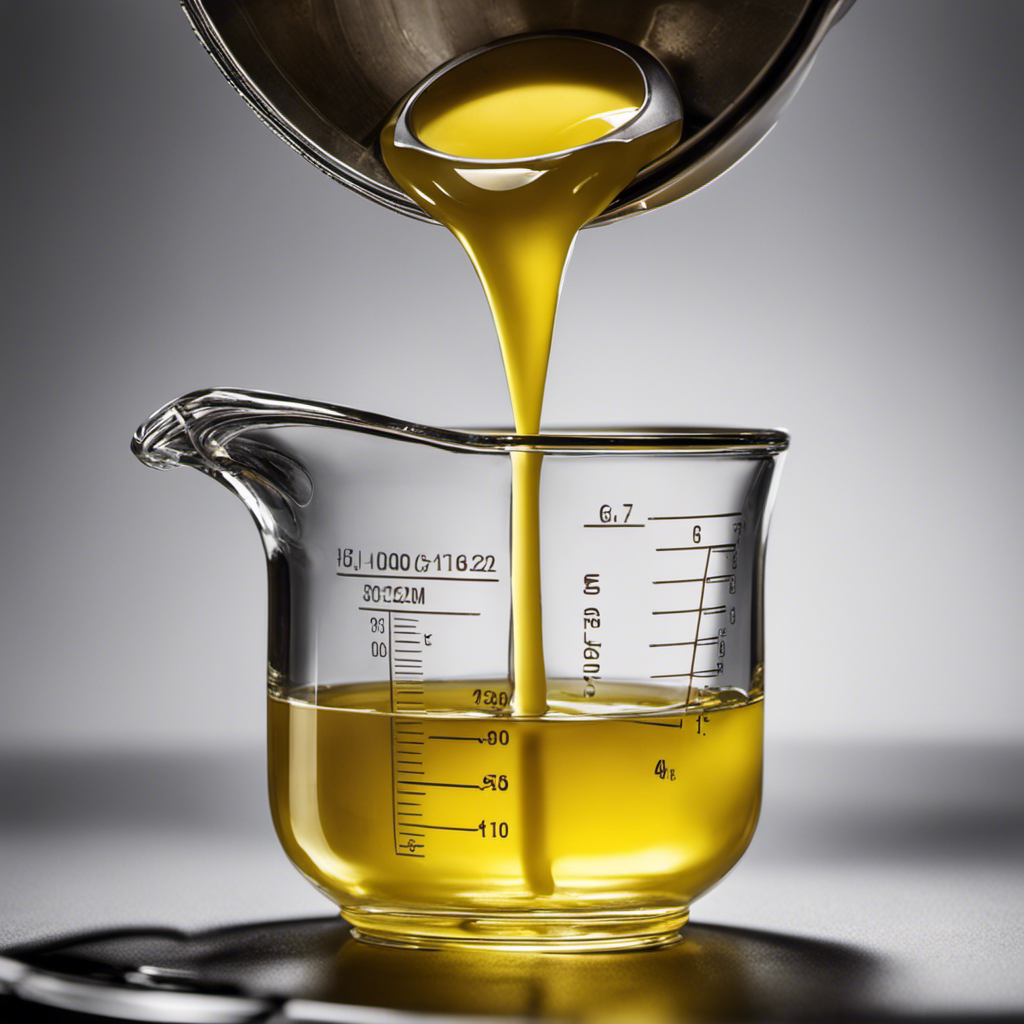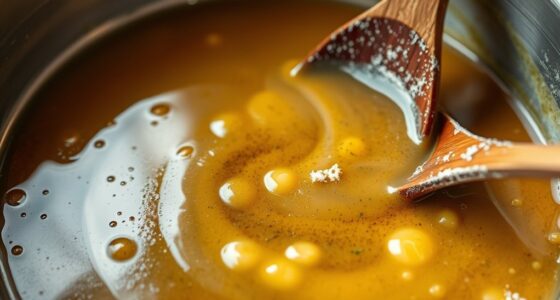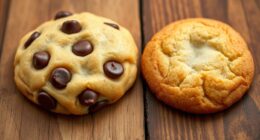Wake up to the heavenly aroma of freshly baked Japanese Butter Roll Bread – a soft, cloud-like delight that melts in your mouth and transports you to a cozy Tokyo bakery. This beloved bread features a lightly golden exterior that gives way to a fluffy, feathery interior, infused with a rich, buttery flavor. The labor-intensive process of kneading, proofing, and brushing with butter creates an irresistible texture and taste. Enjoy this versatile treat on its own or pair it with your favorite spreads for a moment of pure indulgence. Learn more about how to capture the essence of Japanese baking in your own home.
Key Takeaways
- Japanese Butter Roll Bread is a soft, fluffy, and buttery bread that has become a beloved staple in Japan and globally.
- The recipe features a simple yeast dough rolled with generous butter, creating a swirled effect and rich flavor.
- Proper kneading, proofing, and baking techniques are crucial for achieving the desired airy texture and golden-brown crust.
- Brushing the tops with melted butter before baking enhances the bread's color, softness, and buttery taste.
- Allowing the bread to cool completely is essential for maintaining the perfect tender exterior and fluffy interior.
History
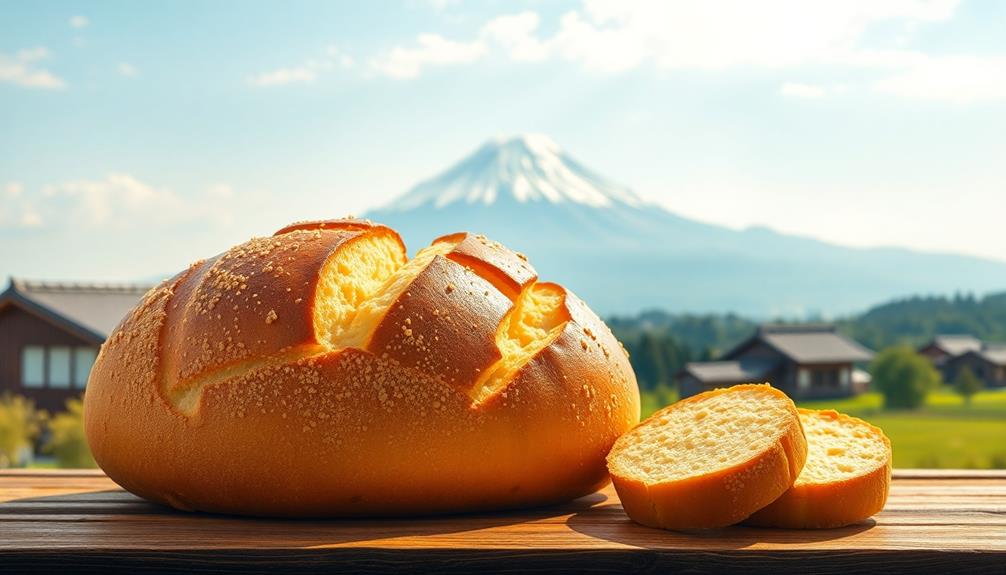
These heavenly rolls quickly gained popularity across Japan, with bakeries and cafes proudly showcasing their own signature versions.
The butter-infused dough results in a cloud-like interior that's incredibly light and airy, yet still rich and indulgent. The exterior is lightly golden and delicately crisp, providing a satisfying contrast to the feathery soft center.
Whether enjoyed for breakfast, as an afternoon snack, or as a decadent dessert, the Japanese butter roll has become a beloved staple, capturing the hearts and taste buds of baked goods enthusiasts everywhere.
Recipe
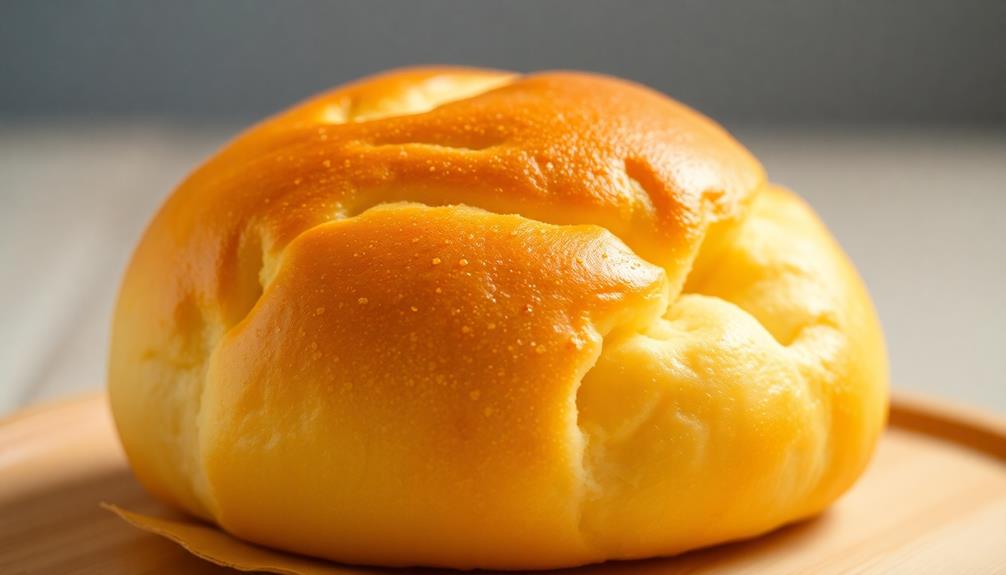
Japanese Butter Roll Bread
Japanese Butter Roll Bread is a soft and fluffy bread that's beloved in Japan. This bread is made with a simple yeast dough that's then rolled with a generous amount of butter, creating a swirled effect when sliced. The result is a delightful pastry-like bread that's perfect for breakfast, snacking, or as a side to soups and stews.
The secret to the perfect Japanese Butter Roll Bread lies in the high-quality butter used and the gentle handling of the dough. By treating the dough with care, you can achieve the signature soft and pillowy texture that makes this bread so irresistible.
- Bread flour
- Granulated sugar
- Salt
- Yeast
- Milk
- Unsalted butter, softened
- Egg
- Butter, for brushing
To make the Japanese Butter Roll Bread, first, prepare the dough by mixing the bread flour, sugar, salt, and yeast in a large bowl.
Heat the milk until warm, then add it to the dry ingredients along with the egg. Knead the dough until it becomes smooth and elastic. Cover the dough and let it rise until doubled in size.
Punch down the dough to release any air bubbles, then roll it out into a large rectangle. Spread the softened butter over the surface of the dough, leaving a small border around the edges.
Tightly roll the dough from the short side, creating a log shape. Cut the log into slices and place them in a greased baking pan, cut-side up. Cover and let the rolls rise again until puffed up.
Bake the rolls in a preheated oven until golden brown. Brush the tops with melted butter while they're still hot.
Serve the Japanese Butter Roll Bread warm, and enjoy the delightful combination of soft, fluffy bread and rich, buttery goodness.
Cooking Steps
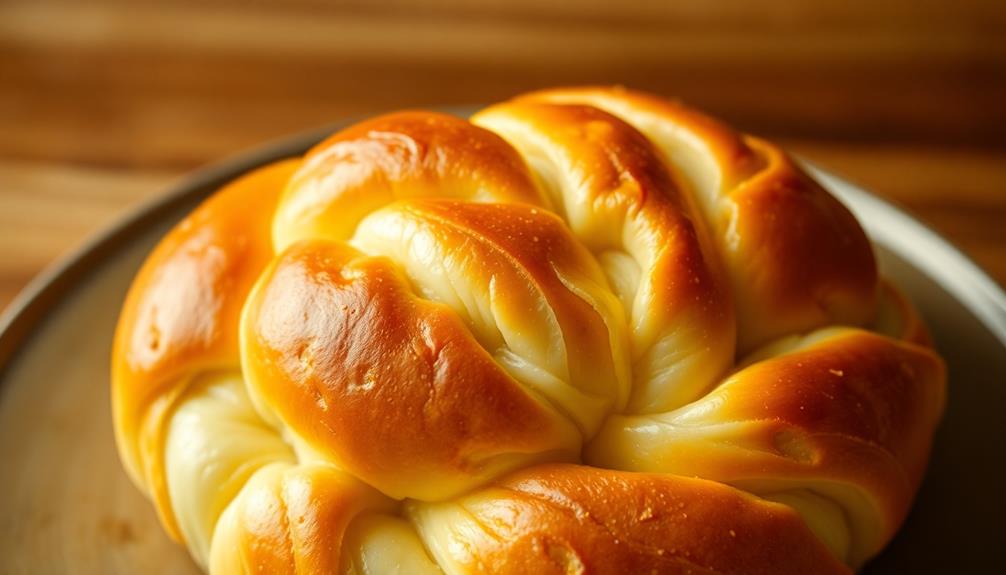
Knead the dough thoroughly, kneading and folding it until it's smooth and elastic.
Then, let the dough rise in a warm spot for an hour, allowing it to double in size.
Once it's proofed, bake the rolls at 350°F for 25 minutes, brushing them with melted butter before popping them in the oven.
Step 1. Knead the Dough Thoroughly
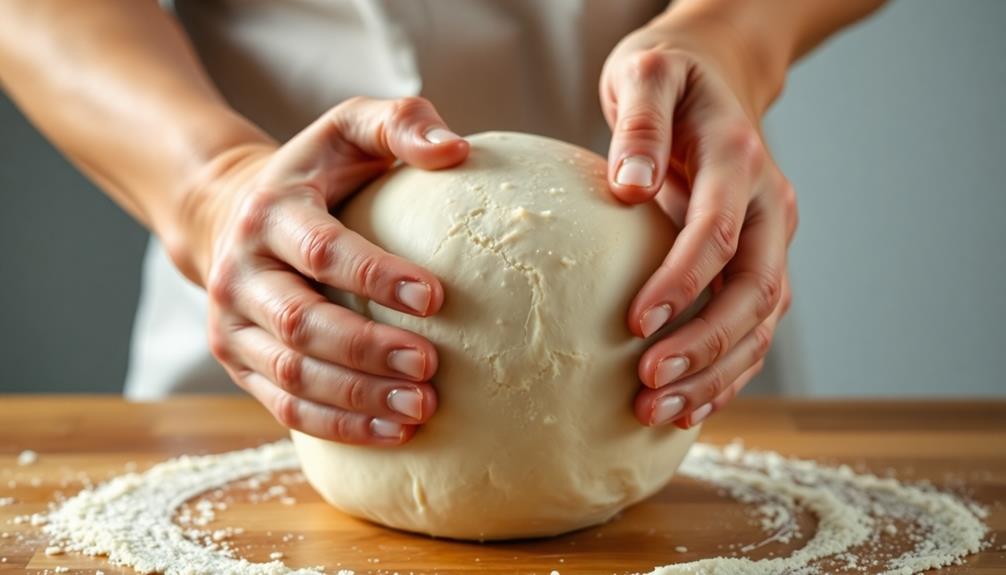
Thoroughly kneading the dough is crucial to achieving the desired texture and rise in your Japanese butter roll bread. This step develops the gluten, creating the soft, airy interior you crave.
Begin by placing the dough on a clean, lightly floured surface. Using the heels of your hands, push the dough away from you, then fold it back toward you. Rotate the dough a quarter turn and repeat.
Continue this process, kneading vigorously for 5-7 minutes. You'll know the dough is ready when it becomes smooth, elastic, and slightly tacky to the touch.
Resist the urge to add too much extra flour, as this can dry out the dough. Instead, lightly dust your work surface as needed.
Kneading may seem tedious, but this manual labor is essential for transforming a shaggy mass into a supple, well-developed dough. Embrace the process – your efforts will be rewarded with pillowy, buttery goodness.
Step 2. Proof the Dough for 1 Hour
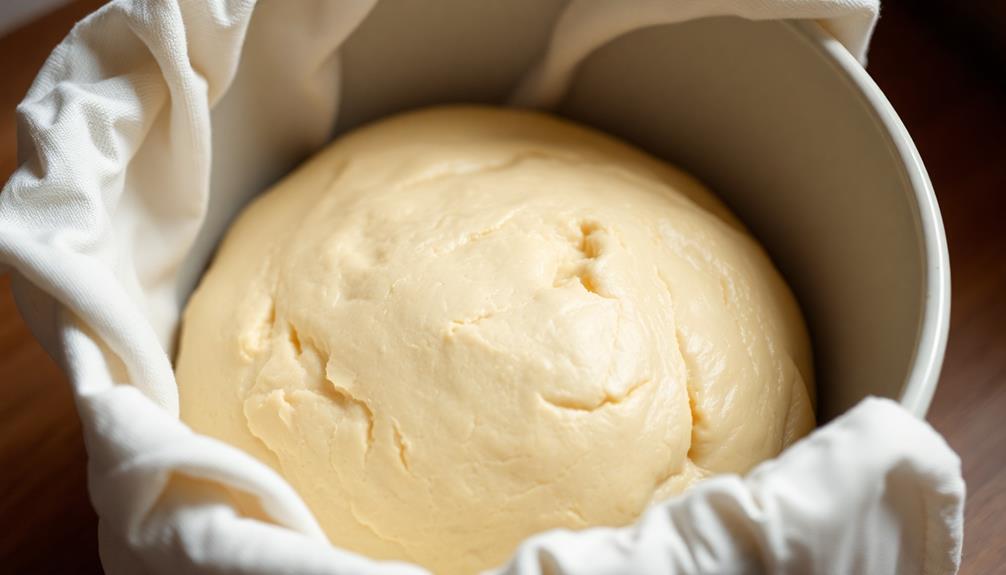
After thoroughly kneading the dough, allow it to proof for a full hour. This resting period is crucial, as it gives the yeast time to work its magic and transform the dough into a light, airy masterpiece.
As the dough proofs, you'll notice it steadily expanding, doubling in size as the yeast produces carbon dioxide bubbles that get trapped within the gluten network.
Resist the urge to peek! Keeping the dough covered will maintain the warm, humid environment essential for proper proofing.
The perfect proof will yield a pillowy, soft dough that's ready to be shaped into those mouthwatering Japanese butter rolls. Set a timer and let the dough do its thing – in an hour, you'll have a beautifully risen base for the next steps.
Patience is key, as this brief yet important resting period lays the foundation for the fluffy, cloud-like texture you're after. Soon, the fun part begins as you shape the dough into rolls and bake them to golden perfection.
Step 3. Bake at 350°F for 25 Minutes
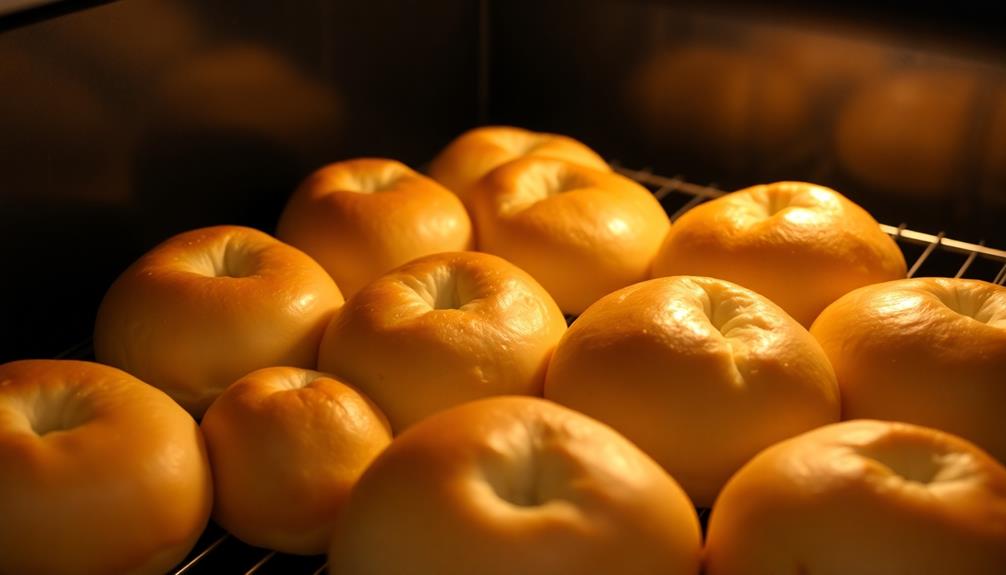
With the dough now perfectly proofed, it's time to transform it into those irresistible Japanese butter rolls. Preheat your oven to a toasty 350°F and lightly grease a baking sheet.
Gently punch down the dough to release any air bubbles, then divide it into 12 equal pieces. Roll each piece into a smooth ball and place them on the prepared baking sheet, spacing them about 2 inches apart. While you're preparing the dough, you might also be inspired to try making Dirt Cups for a fun dessert option that requires no baking.
As the rolls bake, your kitchen will fill with the tantalizing aroma of freshly-baked bread. Keep a close eye on them, as they'll only need about 25 minutes to achieve that perfect golden-brown color.
When the timer goes off, resist the urge to open the oven door too often, as this can cause the rolls to deflate. Instead, use the oven light to check on their progress.
Once those fluffy, cloud-like rolls are ready, remove them from the oven and let them cool for a few minutes before serving. Slather them with butter, jam, or your favorite toppings, and enjoy this taste of Japanese baking heaven.
Step 4. Brush With Melted Butter Before Baking
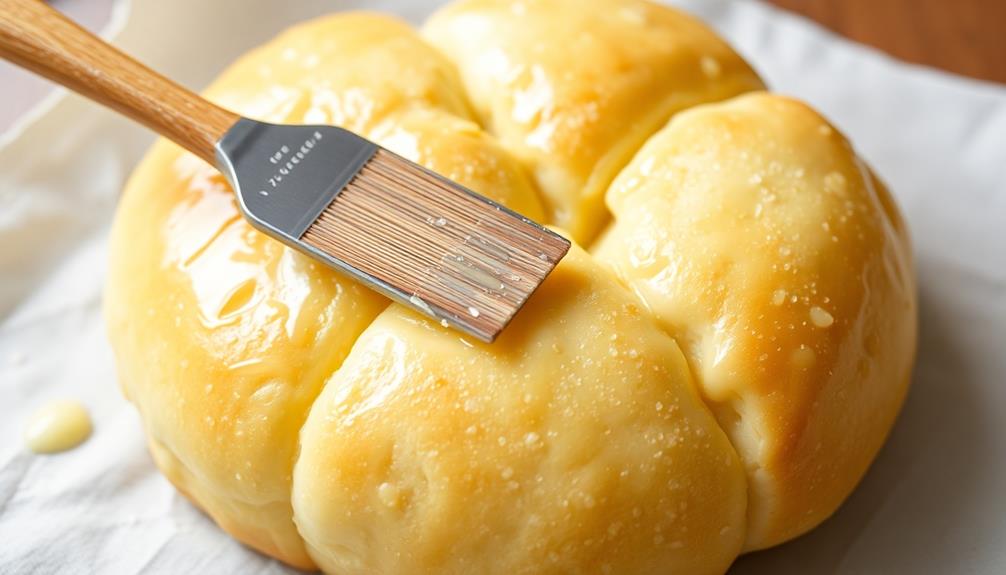
Before placing the rolls in the oven, brush the tops lightly with melted butter. This simple step will give your Japanese Butter Roll Bread a beautiful, golden-brown sheen and a delightful, buttery flavor.
The melted butter will also help create a soft, pillowy texture, sealing in moisture and preventing the rolls from drying out during baking.
Using a clean pastry brush, gently sweep the butter across the top of each roll, being careful not to deflate the dough. The butter should be just warm enough to flow easily, not hot enough to cook the dough.
Work quickly, as the butter will cool and become difficult to spread. Once the rolls are fully coated, pop them in the oven and let the magic happen.
The butter will caramelize and create a crisp, shiny crust, while the interior remains light and airy. This simple trick elevates your homemade bread to bakery-worthy perfection.
Enjoy the incredible aroma and flavor of these irresistible Japanese-inspired rolls.
Step 5. Allow to Cool Completely
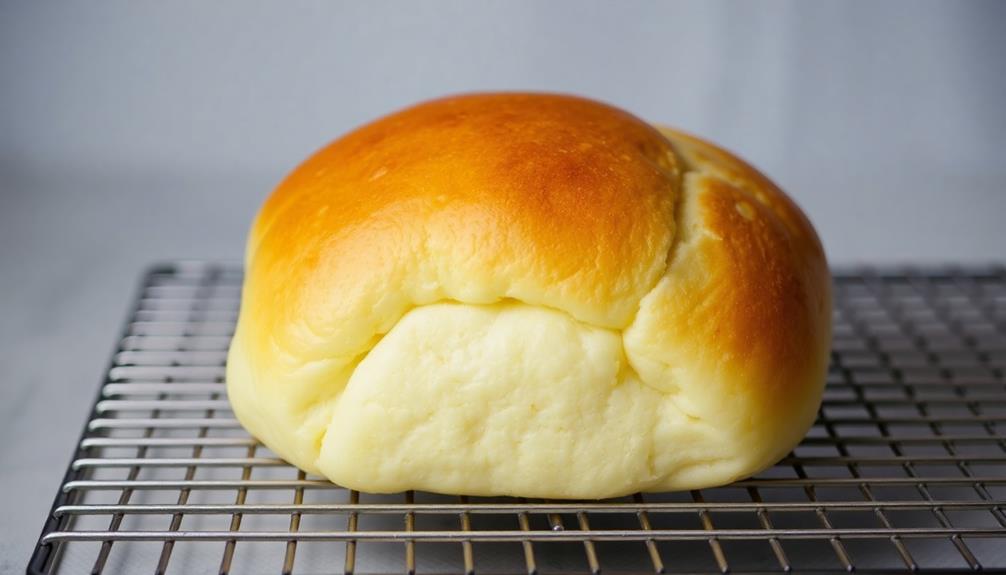
Once the Japanese Butter Roll Bread has finished baking, let the rolls cool completely on a wire rack. This step is crucial to ensure the perfect texture and flavor.
As the rolls sit, the steam will gradually escape, leaving you with a soft, airy crumb that practically melts in your mouth. You'll notice the crust turning a lovely golden brown as it cools.
Resist the temptation to slice into the rolls right away, as they need time to set. Patience is key here – allow at least 30 minutes for the rolls to cool completely. This will give the interior a chance to firm up, while the exterior maintains a delicate, tender bite.
Once cooled, the rolls are ready to be enjoyed. Their cloud-like texture and rich, buttery taste will make it well worth the wait. Savor every bite and revel in the comforting goodness of these Japanese-inspired treats.
Final Thoughts
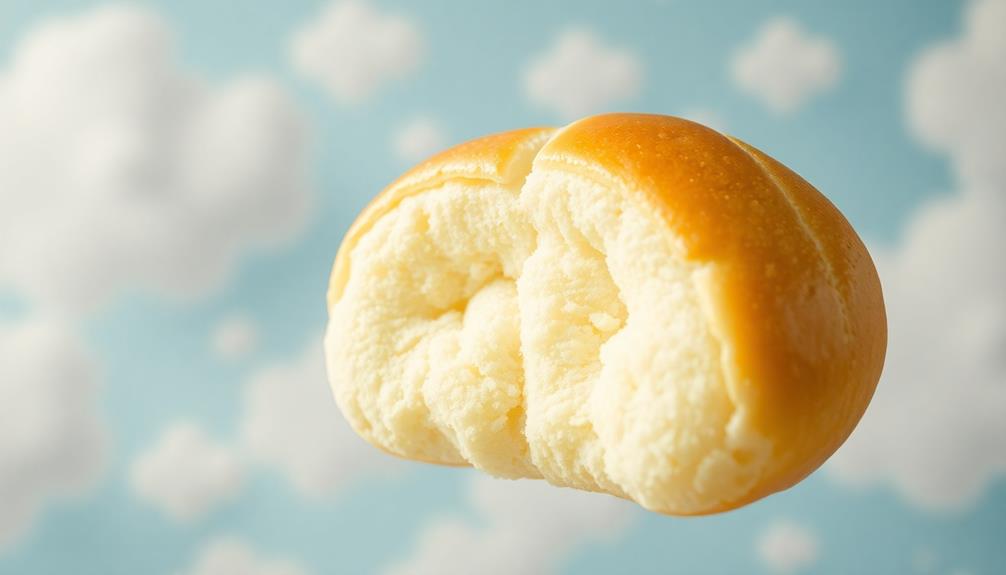
The Japanese butter roll bread, with its pillowy soft texture and rich, buttery flavor, stands as a true testament to the artistry and care that goes into traditional Japanese baking.
As you've discovered through this recipe, creating these delectable treats is a labor of love, requiring patience and a keen eye for detail. But the end result is well worth the effort, as each bite transports you to the charming bakeries of Japan, where the aroma of freshly baked bread fills the air.
Looking back on the process, you can't help but feel a sense of accomplishment. From the precise kneading to the perfectly timed proofing, every step played a crucial role in shaping the light, fluffy texture that makes these rolls so irresistible.
And the final touch of melted butter, glistening on the golden crust, elevates the experience to a new level of indulgence.
As you savor the last morsel, you find yourself already craving your next Japanese butter roll. This recipe has become a new staple in your baking repertoire, a delightful way to start the day and share the flavors of Japan with loved ones.
Frequently Asked Questions
Is Japanese Butter Roll Bread Gluten-Free?
No, Japanese butter roll bread is not gluten-free. This type of bread typically contains wheat flour, which means it's not suitable for individuals following a gluten-free diet. You'll need to seek out alternative gluten-free bread options if that's a dietary requirement for you.
How Long Does Japanese Butter Roll Bread Stay Fresh?
Japanese butter roll bread typically stays fresh for 2-3 days when stored at room temperature. To maintain its soft, fluffy texture, you'll want to consume it within a few days of purchasing or baking.
Can Japanese Butter Roll Bread Be Frozen?
Yes, the bread can be frozen. Simply wrap it tightly in plastic wrap or aluminum foil and store it in the freezer for up to 2 months. When ready to enjoy, thaw it at room temperature before serving.
What Is the Nutritional Value of Japanese Butter Roll Bread?
The nutritional value of this bread can vary, but it's typically high in carbohydrates and fat from the butter and sugar used in its preparation. It's not the healthiest breakfast option, but it can be enjoyed as an occasional treat.
Can Japanese Butter Roll Bread Be Made With Vegan Ingredients?
You can certainly make a vegan version of Japanese butter roll bread. Use plant-based milk and butter substitutes to create a similarly soft, fluffy texture without any animal products. With the right ingredients, you'll enjoy a delicious dairy-free treat.
